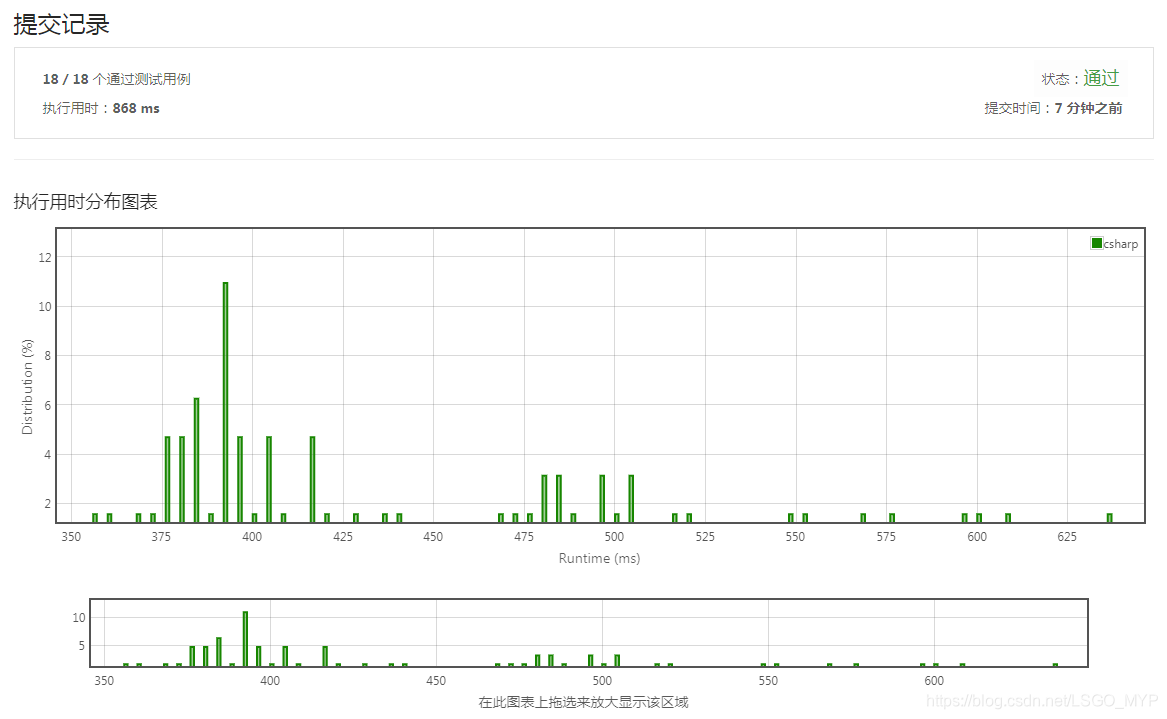背景
题目英文
Design and implement a data structure for Least Recently Used (LRU) cache. It should support the following operations: get and put.
get(key) - Get the value (will always be positive) of the key if the key exists in the cache, otherwise return -1.
put(key, value) - Set or insert the value if the key is not already present. When the cache reached its capacity, it should invalidate the least recently used item before inserting a new item.
The cache is initialized with a positive capacity.
Follow up:
Could you do both operations in O(1) time complexity?
Example:
LRUCache cache = new LRUCache( 2 /* capacity */ );
cache.put(1, 1);
cache.put(2, 2);
cache.get(1); // returns 1
cache.put(3, 3); // evicts key 2
cache.get(2); // returns -1 (not found)
cache.put(4, 4); // evicts key 1
cache.get(1); // returns -1 (not found)
cache.get(3); // returns 3
cache.get(4); // returns 4
题目中文
运用你所掌握的数据结构,设计和实现一个 LRU (最近最少使用) 缓存机制。它应该支持以下操作: 获取数据 get 和 写入数据 put 。
获取数据 get(key) - 如果密钥 (key) 存在于缓存中,则获取密钥的值(总是正数),否则返回 -1。
写入数据 put(key, value) - 如果密钥不存在,则写入其数据值。当缓存容量达到上限时,它应该在写入新数据之前删除最近最少使用的数据值,从而为新的数据值留出空间。
进阶:
你是否可以在 O(1) 时间复杂度内完成这两种操作?
示例:
LRUCache cache = new LRUCache( 2 /* 缓存容量 */ );
cache.put(1, 1);
cache.put(2, 2);
cache.get(1); // 返回 1
cache.put(3, 3); // 该操作会使得密钥 2 作废
cache.get(2); // 返回 -1 (未找到)
cache.put(4, 4); // 该操作会使得密钥 1 作废
cache.get(1); // 返回 -1 (未找到)
cache.get(3); // 返回 3
cache.get(4); // 返回 4
算法实现
计算机的缓存容量有限,如果缓存满了就要删除一些内容,给新内容腾位置。但问题是,删除哪些内容呢?我们肯定希望删掉哪些没什么用的缓存,而把有用的数据继续留在缓存里,方便之后继续使用。那么,什么样的数据,我们判定为「有用的」的数据呢?
LRU 缓存淘汰算法就是一种常用策略。LRU 的全称是 Least Recently Used,也就是说我们认为最近使用过的数据应该是是「有用的」,很久都没用过的数据应该是无用的,内存满了就优先删那些很久没用过的数据。
利用单链表的方式:
public class LRUCache
{
private readonly int _length;
private readonly List<KeyValuePair<int, int>> _lst;
public LRUCache(int capacity)
{
_length = capacity;
_lst = new List<KeyValuePair<int, int>>();
}
private int GetIndex(int key)
{
for (int i=0,len=_lst.Count;i<len;i++)
{
if (_lst[i].Key == key)
{
return i;
}
}
return -1;
}
public int Get(int key)
{
int index = GetIndex(key);
if (index!=-1)
{
int val = _lst[index].Value;
_lst.RemoveAt(index);
_lst.Add(new KeyValuePair<int, int>(key, val));
return val;
}
return -1;
}
public void Put(int key, int value)
{
int index = GetIndex(key);
if (index!=-1)
{
_lst.RemoveAt(index);
}
else if (_lst.Count == _length)
{
_lst.RemoveAt(0);
}
_lst.Add(new KeyValuePair<int, int>(key, value));
}
}
/**
* Your LRUCache object will be instantiated and called as such:
* LRUCache obj = new LRUCache(capacity);
* int param_1 = obj.Get(key);
* obj.Put(key,value);
*/
利用 字典(哈希)+单链表 的方式:
public class LRUCache
{
private readonly List<int> _keys;
private readonly Dictionary<int, int> _dict;
public LRUCache(int capacity)
{
_keys = new List<int>(capacity);
_dict = new Dictionary<int, int>(capacity);
}
public int Get(int key)
{
if (_dict.ContainsKey(key))
{
_keys.Remove(key);
_keys.Add(key);
return _dict[key];
}
return -1;
}
public void Put(int key, int value)
{
if (_dict.ContainsKey(key))
{
_dict.Remove(key);
_keys.Remove(key);
}
else if (_keys.Count == _keys.Capacity)
{
_dict.Remove(_keys[0]);
_keys.RemoveAt(0);
}
_keys.Add(key);
_dict.Add(key, value);
}
}
/**
* Your LRUCache object will be instantiated and called as such:
* LRUCache obj = new LRUCache(capacity);
* int param_1 = obj.Get(key);
* obj.Put(key,value);
*/
实验结果
利用单链表的方式:
- 状态:通过
- 18 / 18 个通过测试用例
- 执行用时: 868 ms, 在所有 C# 提交中击败了 6.25% 的用户
- 内存消耗: 47.8 MB, 在所有 C# 提交中击败了 26.67% 的用户

利用 字典(哈希)+单链表 的方式:
- 状态:通过
- 18 / 18 个通过测试用例
- 执行用时: 392 ms, 在所有 C# 提交中击败了 76.56% 的用户
- 内存消耗: 47.9 MB, 在所有 C# 提交中击败了 20.00% 的用户

相关图文
1. “数组”类算法
- LeetCode实战:三数之和
- LeetCode实战:最接近的三数之和
- LeetCode实战:求众数
- LeetCode实战:缺失的第一个正数
- LeetCode实战:快乐数
- LeetCode实战:寻找两个有序数组的中位数
- LeetCode实战:盛最多水的容器
- LeetCode实战:删除排序数组中的重复项
- LeetCode实战:搜索旋转排序数组
- LeetCode实战:螺旋矩阵
- LeetCode实战:螺旋矩阵 II
- LeetCode实战:买卖股票的最佳时机
- LeetCode实战:买卖股票的最佳时机 II
2. “链表”类算法
3. “栈”类算法
4. “队列”类算法
5. “递归”类算法
6. “位运算”类算法
7. “字符串”类算法
8. “树”类算法
9. “哈希”类算法
10. “排序”类算法
11. “搜索”类算法
12. “动态规划”类算法
13. “回溯”类算法
14. “数值分析”类算法
来源:CSDN
作者:老马的程序人生
链接:https://blog.csdn.net/LSGO_MYP/article/details/101102200